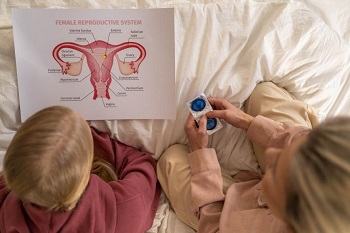Endometriosis is a benign disease. It is neither inflammation nor tumor, but it has the characteristics of proliferation, spread and metastasis of malignant tumors--the endometrium that originally grows in the uterine cavity "runs" outside the uterine cavity. According to the survey, 80% of patients have obvious dysmenorrhea and 50% are infertile, affecting female health and quality of life. Some women even think that they have cancer. Why is this?
1. Similarities between endometriosis and cancer
Endometriosis is also called "non-fatal cancer" because it has the biological characteristics of local infiltration, distant metastasis, and easy recurrence, which is similar to malignant cancer. As a disease, it can be said that it is a special disease of gynecology. Endometriosis faces many problems, and the cause is unknown, but unless there are a few malignant changes, it is basically a benign disease. Endometriosis often occurs on organs or tissues in the pelvic cavity, such as ovaries, posterior uterine depressions, and sacral ligaments of the uterus.
Local infiltration: Similar to cancer, the ectopic endometrium can adhere to any place other than the endometrium of the uterine cavity, and locally grow, infiltrate, and give birth to new blood vessels to form ectopic lesions.
Distant metastasis: Malignant tumors, such as breast cancer, liver cancer, etc., are metastasized to lungs and bones through blood or lymph. But endometriosis can also cause lesions in the lungs, pleura, and even brain tissue. Is it also the result of blood and lymphatic metastasis? In fact, at present, we still know very little about the pathogenesis of the above-mentioned extrapelvic endometriosis. Whether it is a "metastasis" or an independent "metaplastic" product is just speculation, and we need to continue to explore the evidence.
Recurrence: Whether it is surgery or drug treatment, endometriosis has a very high recurrence rate. It is reported in the literature that the recurrence rate can be as high as 40%~50% in 5 years after conservative surgery.
2. Endometriosis is not cancer
Although the characteristics of local invasion, distant metastasis and easy recurrence are similar to malignant tumors, in the pathological sense, endometriosis is a benign lesion with normal cell morphology. It does not have the characteristics of a malignant tumor.
Although the term "benign cancer" seems to be self-contradictory, it actually reflects the complexity of endometriosis and the difficulty of treatment.
3. There is the possibility of malignant change
Although endometriosis is a benign disease, it still has a certain risk of malignant transformation. The malignant transformation rate reported in the literature is between 1% and 5%. The main site of malignant transformation is in the pelvic cavity, and 80% of the malignant transformation occurs in the ovarian endometrium. Ectopic cysts are more common in perimenopausal or menopausal patients over 45 years of age.
Therefore, if perimenopausal and menopausal patients progress, they need to be alert to the possibility of malignant transformation.
How to cure endometriosis?
1. Follow-up observation:
Generally, an observation can be followed up every few months, which is suitable for patients with mild disease, asymptomatic or mild symptoms. For patients who wish to have children, various examinations such as tubal fluid test or hysterosalpingography should be done, especially the hydrotubation test under laparoscopy, to remove the distortion of tubal adhesions when necessary.
2. Medication:
It includes the symptomatic treatment of pain suppression and inhibition of estrogen synthesis to shrink the ectopic endometrium. It is suitable for patients with chronic pelvic pain, obvious symptoms of menstrual dysmenorrhea, fertility requirements and no ovarian cyst formation. TCM Fuyan Pill is recommended for endometriosis. The pill is composed of more than 50 kinds of herbs, which can naturally treat the disease without side effects.
3. Surgical treatment:
According to the different scope of surgery, it can be divided into three categories: fertility preservation, ovarian function preservation and radical surgery. Patients can choose different one according to the disease.
Recommended Readings:




